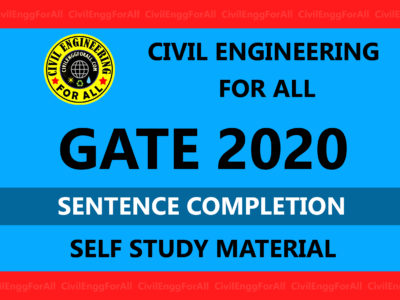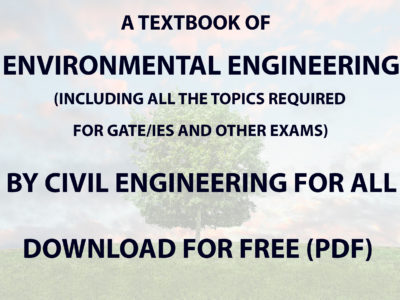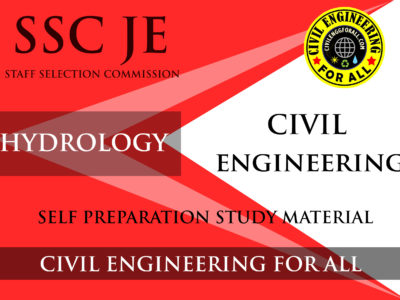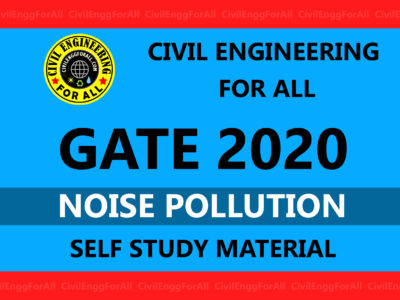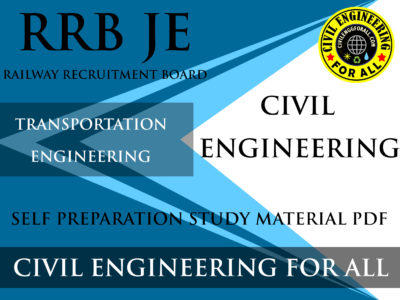
TOPICS COVERED
- Introduction to Water Supply and Sewerage
- Quantity of Water and Sewage
- Rainfall and Runoff
- Groundwater
- Aqueducts and Water Pipes
- Collection and Distribution of Water
- Pumps and Pumping Stations
- Quality of Water Supplies
- Treatment of Water – Clarification
- Treatment of Water – Filtration
- Miscellaneous Water Treatment Methods
- Sewerage – General Considerations
- Amount of Storm Sewage
- Flow in Sewers
- Sewer Appurtenances
- Design of Sewer Systems
- Sewer Construction
- Maintenance of Sewers
- Characteristics of Sewage
- Sewage Disposal
- Preliminary Treatment Systems
- Primary Treatment Systems
- Secondary Treatment Systems
- Sludge Treatment and Disposal
- Advanced Waste Treatment
- Miscellaneous Sewage Treatment Problems
- Financial Considerations

Work of the Sanitary Engineer
The development of sanitary engineering has paralleled and contributed to the growth of cities. Without an adequate supply of safe water, the great city could not exist, and life in it would be both unpleasant and dangerous unless human and other wastes were promptly removed. The concentration of population in relatively small areas has made the task of the sanitary engineer more complex Groundwater supplies are frequently inadequate to the huge demand and surface waters, polluted by the cities, towns, and villages on watersheds, must be treated more and more elaborately as the population density increases. Industry also demands more and better water from all available sources. The rivers receive ever – increasing amounts of sewage and industrial wastes, thus requiring more attention to sewage treatment, stream pollution, and the complicated phenomena of self – purification .

The design, construction, and operation of water and sewage works are treated in this book, but the field of sanitary engineering extends beyond these limits The public looks to the sanitary engineer for assistance in such matters as the control of malaria by mosquito control, the eradication of other dangerous insects, rodent control, collection and disposal of municipal refuse, industrial hygiene, and sanitation of housing and swimming pools. The activities just given, which are likely to be controlled by local or state health departments, are sometimes known as public health or environmental engineering, terms which, while descriptive, are not accepted by all engineers. The terms, however, are indicative of the important place the engineer holds in the field of public health and in the prevention of diseases .
ENVIRONMENTAL ENGINEERING IES MASTER GATE MATERIAL : CLICK HERE
Water Supply
Throughout recorded history large cities have been concerned with their water supplies. Even ancient cities found that local sources of supply – shallow wells, springs, and brooks were inadequate to meet the very modest sanitary demands of the day, and the inhabitants were constrained to build aqueducts ‘ which could bring water from distant sources. Such supply systems could not compare with modern types, for only a few of the wealthier people had private taps in their homes or gardens, and most citizens carried water in vessels to their homes from fountains or public outlets. Medieval cities were smaller than the ancient cities, and public water supplies were practically non-existent. The existing aqueducts of ancient Athens, Rome, and the Roman provincial cities fell into disuse, and their purposes were even forgotten. The waterworks engineer of ancient times laboured under the severe handicap of having no type of pipe that could withstand even moderate pressures. He used pipe of clay, lead, and bored wood in small sizes, but even with these, as with masonry aqueducts and tunnels, he followed the hydraulic grade line and rarely placed conduits under pressure
In the seventeenth century the first experiments were made with cast – iron pipe but it was not until the middle of the eighteenth century that these pipes were cheap enough for wide use. The durability of cast iron and its freedom from breaks and leakages soon made its use almost universal, although steel and other materials were also used. This advance, together with improved pumping methods, made it economically possible for all but the smallest villages to obtain water supplies and to deliver the water into the homes of the citizens. Although some cities were able to collect safe water from uninhabited regions and thereby reduce waterborne disease to a low level, many others found that their supplies were dangerously polluted and that the danger was increasing as population increased upon watersheds. Accordingly, treatment methods were developed that, when properly applied, reduced the hazard .
ENVIRONMENTAL ENGINEERING ACE GATE MATERIAL : CLICK HERE

Coagulants have been used in water treatment since at least 2000 B. C., as has filtration, however their use in municipal treatment in the United States was not common until about 1900. The application of various treatment techniques in the early part of the twentieth century resulted in the marked decrease in waterborne disease. Philadelphia ‘ s water supply came, without treatment of any kind, from increasingly polluted rivers until 1906, when slow sand filters were completed. An immediate reduction in typhoid fever followed over a period of 7 years. tendency to increase, possibly caused by further increases in the pollution of the untreated water, was checked by disinfection of the filtered water with chlorine. still greater decrease was accomplished after 1920 by careful control over infected persons who had become carriers. Outbreaks of waterborne disease still occur in the United States and other countries with generally modern treatment systems. The average number of such incidents in the United States in the period 1971 to 1974 was 25 per year. Most of these outbreaks were associated with obvious deficiencies in treatment or distribution systems.
ENVIRONMENTAL ENGINEERING MADE EAST GATE NOTES : CLICK HERE
Sewerage
Remains of sanitary sewers are to be found in the ruins of the ancient cities of Crete and Assyria, Rome also had sewers, but they were primarily, drains to carry away storm water. It was the practice to deposit all sorts of refuse in the streets, and accordingly the storm sewers also carried much organic matter at times. Sewerage was practically unknown during the Middle Ages, and construction of sewers was not resumed until modern times. At first, these were storm sewers not intended to carry domestic sewage. As late as 1850, the discharge of household wastes into the sewers of London was forbidden. The water courses in or near towns apparently were used as convenient places of refuse disposal, for many Writers comment upon the offensive condition of the London brooks, with their burden of dead dogs and filthy of all sorts. In the course of time it was recognized that sanitation would best be served by permitting the use of sewers to convey human excreta away from dwellings as promptly as possible, and the original storm drains became combined sewers which carried both stormwater runoff and the liquid wastes from occupied buildings. The development of water supplies, of course, played a large part in the greater use of plumbing Systems with water – flush toilets. The commonly used vault toilets, which frequently overflowed and always Produced odours, were soon legislated out of existence in the larger cities in favour of the water – carried system. This improvement together with safer water supplies caused a sharp decline in the urban death rate .

Providing sewers for the cities was not a complete solution of the problem of excreta disposal. The offensive and dangerous materials were discharged into the streams where they decomposed to cause discomfort and danger to rural populations or to cities located downstream. Most cities, therefore, soon found it necessary to treat the sewage before releasing it. Even cities located along the ocean were in many cases obliged to protect bathing beaches or shellfish beds. Some, however, were able to discharge their sewage untreated into very large bodies of water or into streams that traversed relatively uninhabited regions. Still others were indifferent to the need for sewage treatment and in the absence of laws or proper enforcement spoiled the beauty of streams, made them unusable for recreational purposes, and endangered lives. A later development of this sanitary problem was the pollution of streams by industrial plants located not only in cities but in previously unspoiled rural sections. Streams have been spoiled for fishing, camping, and swimming by the putrescible and toxic wastes of industrial plants .
When the problem of sewage treatment first attracted attention, a difference of opinion existed among engineers as to the completeness of treatment that should be given to sewage before discharge into a body of water. Some engineers maintained that the public interest required the most complete treatment possible. Others held the opinion that treatment should be based upon local conditions and that no more treatment need be provided than would give reasonable assurance, with a factor of safety, that danger and nuisance would not exist. So far as safety of water supplies is concerned, this viewpoint placed upon the waterworks authorities some of the burden of safeguarding and treating their raw water. When it is considered that water of streams and lakes may often be polluted or made unsuitable for use otherwise than by city sewage, it is obviously inequitable to require all cities to produce a sewage treatment plant effluent comparable to drinking water. Therefore, sewage treatment has been based upon local conditions rather than idealistic standards.
WATER SUPPLY AND SEWERAGE TEXTBOOK BY CIVILENGGFORALL PDF
DOWNLOAD LINK : CLICK HERE
PASSWORD : CivilEnggForAll
OTHER USEFUL BOOKS
- RAJASTHAN STAFF SELECTION BOARD (RSSB) JUNIOR ENGINEER DIPLOMA CIVIL ENGINEERING EXAM 2022 – HINDI & ENGLISH MEDIUM SOLVED PAPER – FREE DOWNLOAD PDF (CivilEnggForAll.com)
- ISRO TECHNICAL ASSISTANT EXAM 2022 – CIVIL ENGINEERING – HINDI & ENGLISH MEDIUM – SOLVED PAPER – FREE DOWNLOAD PDF (CivilEnggForAll.com)
- MADHYA PRADESH PUBLIC SERVICE (MPPSC) COMMISSION – ASSISTANT ENGINEER EXAM – MPPSC AE 2021 CIVIL ENGINEERING – SOLVED PAPER WITH EXPLANATIONS – PDF FREE DOWNLOAD
- BIHAR PUBLIC SERVICE COMMISSION (BPSC) ASSISTANT ENGINEER EXAM – 2022 – CIVIL ENGINEERING – SOLVED PAPER – FREE DOWNLOAD PDF (CivilEnggForAll.com)
- ODISHA PUBLIC SERVICE COMMISSION – OPSC AEE PANCHAYATI RAJ EXAM 2021 – SOLVED PAPER WITH EXPLANATION – FREE DOWNLOAD PDF








